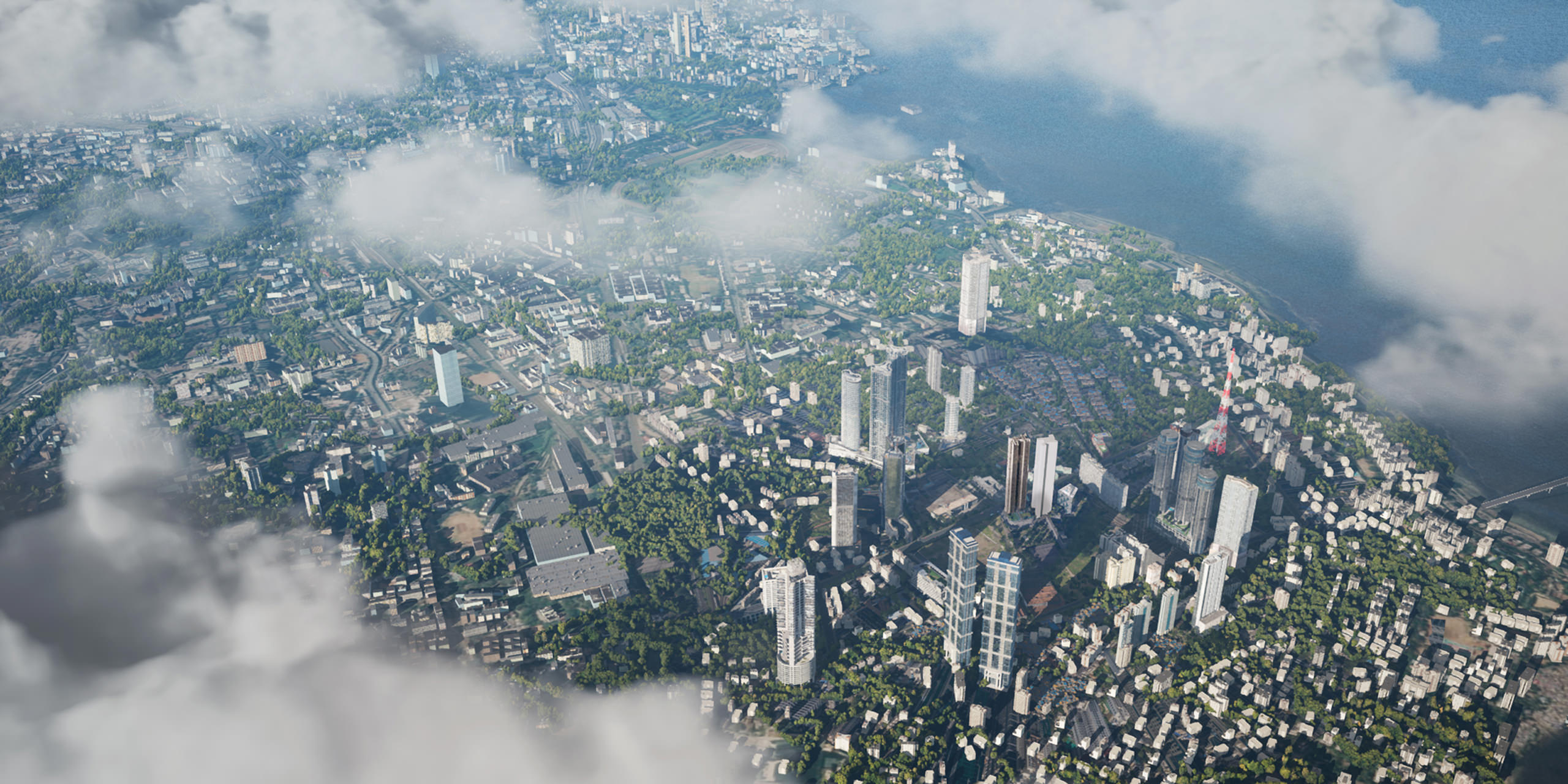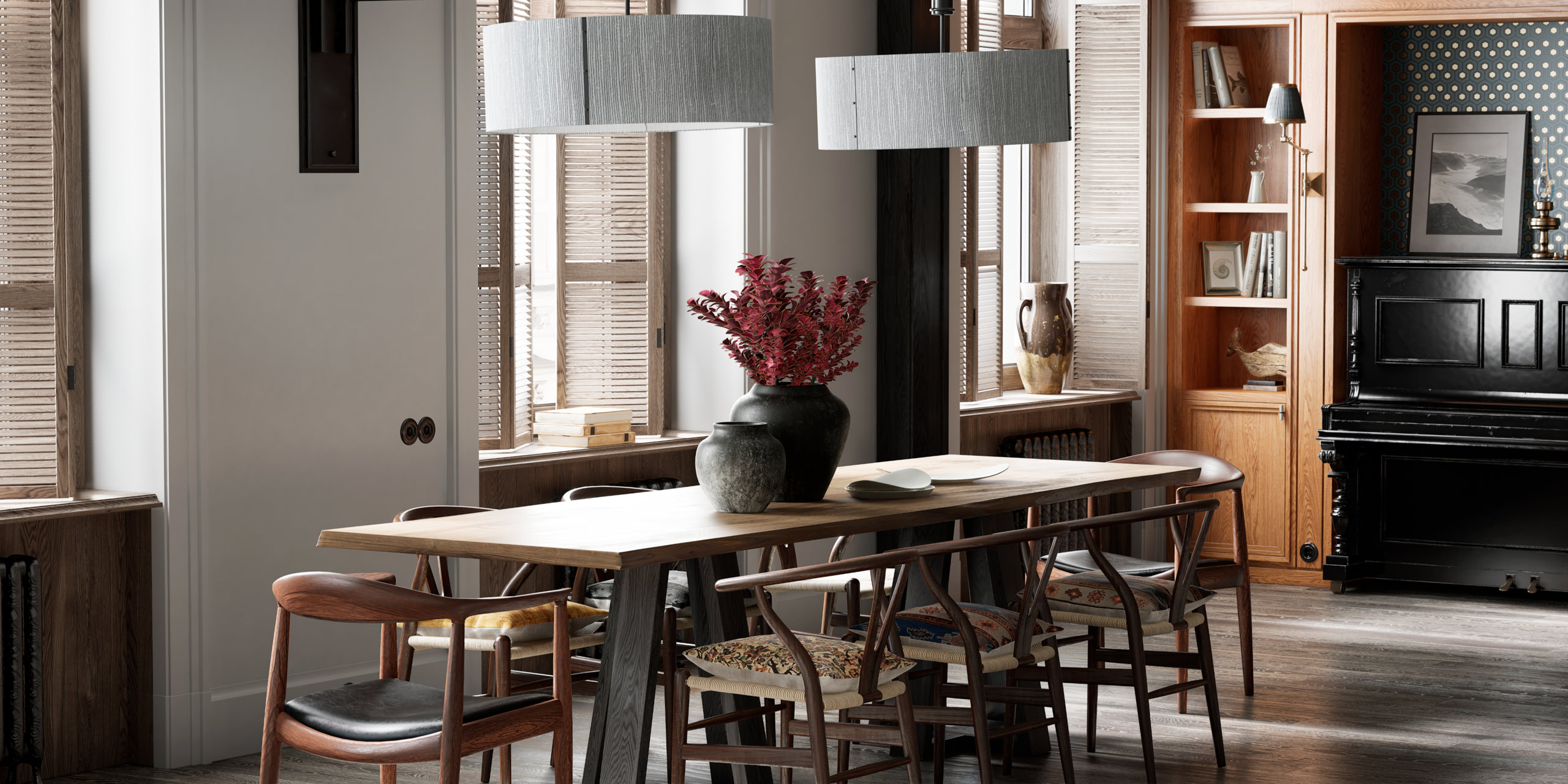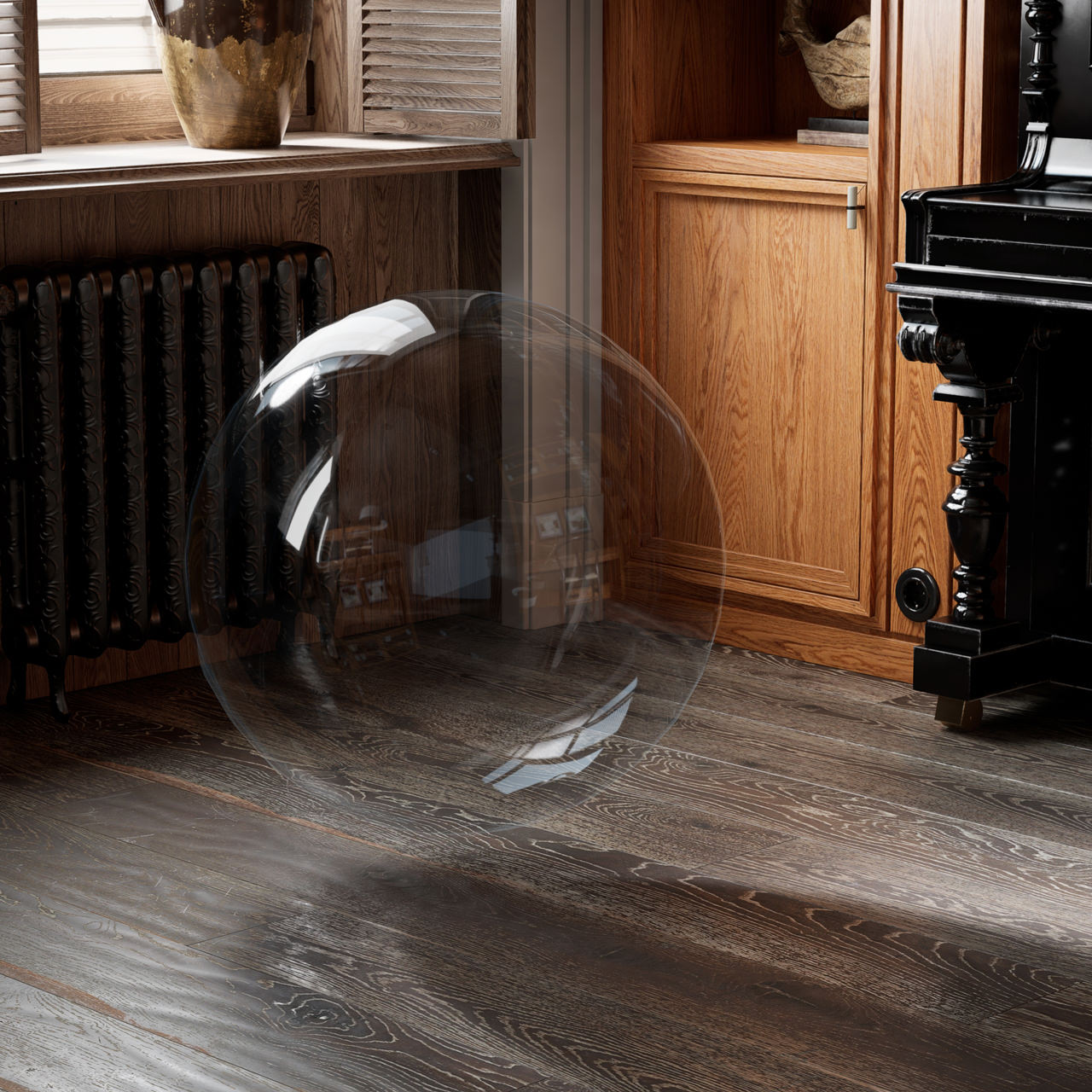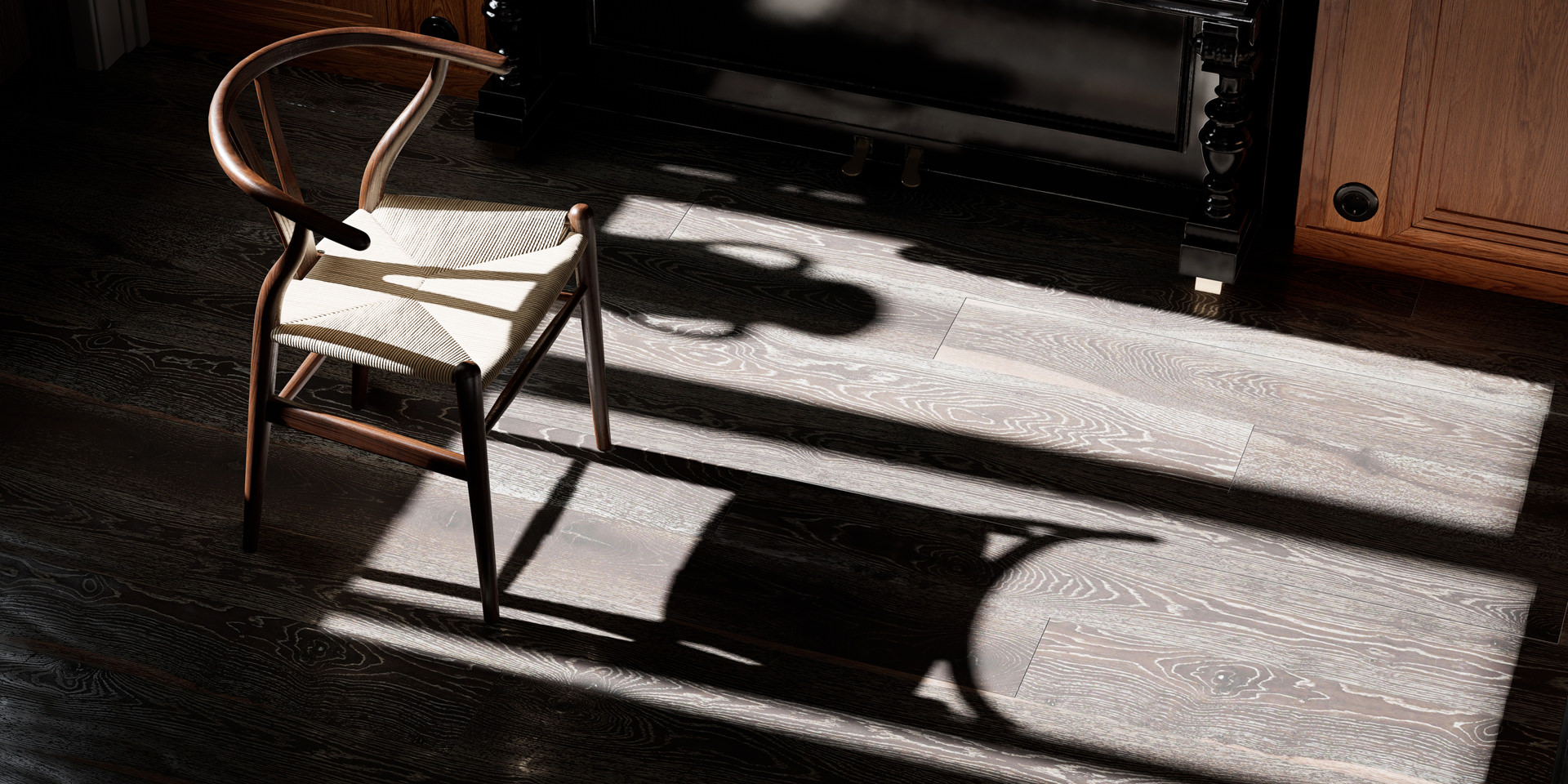Lighting is often viewed as one of the most complex topics in 3D visualization yet it is undoubtedly the key factor to well-balanced and photo-realistic renderings. Whatever the nature of an architectural or interior project, precise lighting and accurate shadows placement are essential for a render that captures the vision of the final result and makes it credible in the viewer’s eyes.
The latest 3D rendering software and VR technologies enable CG artists to visualize spaces and simulate multiple lighting options, helping to avoid errors and ensure beautiful results. In this article we dive deep into the two major technologies – Lumen and Ray Tracing, used for realistic lighting in archviz and compare them to uncover their pros and cons.
Table of article content:
- What is Lumen?
- Understanding the difference between Lumen and Ray Tracing
- Current limitations of lighting technologies
- Future of Lumen in photorealistic visualization
What is Lumen?
Lumen is a fully dynamic global illumination and reflections system designed for next generation consoles that operates by default in Unreal Engine 5. Lumen renders diffuse inter-reflection with infinite bounces and indirect specular reflections in large detailed environments at scales ranging from millimeters to kilometers.
Our CG artists employ this particular software combination when creating highly detailed interior concepts. In the video animation of the apartment designed by Moscow bureau Oleg Klodt, every authentic item in this custom-made interior is conveyed with exceptional realism.

For the interactive L-TOUCH presentation of Birla Niyaara development in Mumbai designed by Foster and Partners, the entire cityscape of the iconic Worli district was recreated in Unreal Engine 5 to highlight the future project location among other notable surroundings.

Understanding the difference between Lumen and Ray Tracing
Lumen is a hybrid tracing pipeline that uses Software Ray Tracing. It traces against the depth buffer first, which we call Screen Traces, then it traces against the distance field and applies lighting to ray hits with the Surface Cache. Lumen takes any given scene and renders a very low-resolution model of it. Light behavior in this low-res model is then recorded, and a rough lightmap is created. This lightmap is then used to trace the path taken by every ray in the scene. Then, the output lighting is upscaled and displayed as a cube map. The engine does all the heavy lifting, and Lumen does not affect the assets gathered in a scene.
Thus, it is an innovative solution to the highly intensive hardware-accelerated ray tracing method. Because the Lumen method uses upscaling, flickering may occur at high resolutions. Ray Tracing does not have this drawback, as it does not use upscaling. Lumen also provides Hardware Ray Tracing. It supports a range of geometry types by tracing against triangles and evaluating lighting where the rays hit. Hardware Ray Tracing is more accurate but more expensive.
Ray Tracing technology looks more natural and produces soft shadowing for lights, accurate ambient occlusion (AO), interactive global illumination, reflections and translucency. Ray Tracing works by simulating actual light rays, using an algorithm to trace the path that a beam of light would take in the physical world when photons fly out of a light source, bounce off and through various surfaces, and then are perceived by our eyes. As a result, the brain makes a picture based on these rays. Ray Tracing works in much the same way as this physical process but in reverse order. Ray Tracing is indeed a powerful and flexible lighting system. It’s flexible because you can mix raster and ray tracing rendering features together, crafting the scene you want. You can use baked lightmaps and add ray tracing reflections or do reflections with cube maps and SSR.


Global Illumination in Lumen (left) compared to Ray Tracing (right) set up in a dining room
To use the Ray Tracing technology, you need a video card containing RT cores; the more of them, the better the performance. Lumen has an advantage in terms of hardware requirements because it does not imply the same level of light calculation as ray tracing. The global illumination provided by Lumen has a fantastic result and accuracy, with more tonal variations than Ray tracing. Lumen is easier to use for CG artists than Ray Tracing as in the Post Process Volume there are only two Lumen settings: Global Illumination and Reflections.
We compared Lumen with RTX Global Illumination (RTXGI), which is more advanced than the default RTX in Unreal Engine 5. You can see that Lumen and Ray Tracing both produce excellent lighting and reflections. However, Ray Tracing is better at building shadows from small and thin objects, and this method also gives more reflections in places where Lumen does not show them. It is evident that shadows and AO are a clear advantage for RTX.


Shadows and light reflections on surfaces compared in a cabinet interior made with Lumen (left) and Ray Tracing (right)
Lumen uses Raster translucency by default which is not effective for photo-realistic level, so we have to switch to Ray Tracing translucency for better results. For rendering, we used MRQ and applied the High Resolution preset to avoid rendering crashes at 4K resolution. Still, we had to abandon this idea, as artifacts appeared in shadows and reflections.
The render with Lumen was successful without using High Resolution, although Screen Percentage was increased to 150%. This fact also indicates that the developers have done a great job optimizing Lumen, resulting in less GPU load during rendering than Ray tracing. At the same time, Lumen produces significantly less noise. On top of that, its rendering time is 2.5 times faster and performance is 5 times higher than with Ray Tracing: 30 fps versus 6 fps respectively.
Current limitations of lighting technologies
Lumen Reflections and Raster Translucency
Given that Raster translucency in Lumen proved to be not as apt for architectural visualization, for better results you should switch to Ray Tracing translucency instead. Below are renders of a glass sphere with different types of translucency:


The most unsatisfactory thing about Lumen at the moment is the reflections in the mirror. Lumen reflection can use one of the two reflection modes: Surface Cache and Hit Lighting for Reflections. The first method gives blurry and indistinct reflections and small meshes appear black in mirror reflections. Using the second one, the reflections become better, but we lose the reflections of the reflections. On the plus side, we see Global Illumination in Lumen Reflections.


If your project has a lot of mirror surfaces, then you should use Ray Tracing Reflections. Such reflections will be clear and realistic, but at the same time, we will not see GI in Ray Tracing Reflection.

Shadows Performance
Virtual Shadow Maps (VSMs) is the new shadow mapping method used to deliver consistent high-resolution shadowing that works with film-quality assets and large dynamically lit open worlds using Unreal Engine 5’s Nanite Virtualized Geometry, Lumen Global Illumination and Reflections, and World Partition features.
Conceptually, virtual shadow maps are made in high-resolution. Their current implementation has a virtual resolution of 16k x 16k pixels. Clipmaps are used to increase the resolution further for Directional Lights. To keep performance high at a reasonable memory cost, VSMs split the shadow map into tiles (or Pages) that are 128×128 each. Pages are allocated and rendered only as needed to shade on-screen pixels based on an analysis of the depth buffer. The pages are cached between frames unless they are invalidated by moving objects or light, which further improves performance.


Comparison of Virtual Shadow Map and Ray Traced Shadows from the Directional Light with Source Angle equal to 1


Comparison of Virtual Shadow Map and Ray Traced Shadows from the Directional Light with Source Angle equal to 12
Ray Traced Shadows simulate soft area lighting effects for objects in the environment. This means that based on the light source size or angle, an object shadow will have sharper edges near the contact surface than farther away, where it softens and widens. Ray-traced shadows still precede VSMs as they generally provide the highest quality solution.
Future of Lumen in photorealistic visualization
Lumen technology was primarily created to become an efficient alternative to Ray Tracing by significantly reducing intense workload and dependence on the most advanced technologies, while still achieving realistic Global Illumination. Next generation game consoles will easily handle products built with Unreal Engine 5 and Lumen also due to Nanite Virtualized Geometry and World Partition. Since the release of UE 5 Early Access, the developers have done a great deal of work on optimizing and fixing bugs, and apparently they are not going to stop there. Thanks to the simplicity and affordability of Lumen, more and more studios began to pay attention to this technology and adopt it into their workflow. Another key role in this is the access to an ever-expanding library of professionally scanned 3D models Quixel Megascans by Epic Games.
Ray Tracing will still be present and continue developing along with Lumen, probably until Lumen reaches as close as possible to the quality of CGI and reflections that Ray Tracing currently provides for. At the end of the day, the existence of multiple technologies that deliver excellent computer generated image quality is a huge plus, and healthy competition between them will drive both Lumen and Ray Tracing to even faster development.